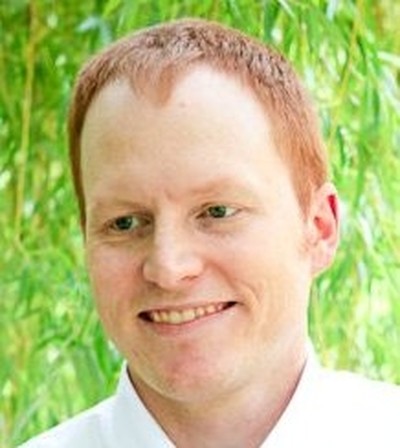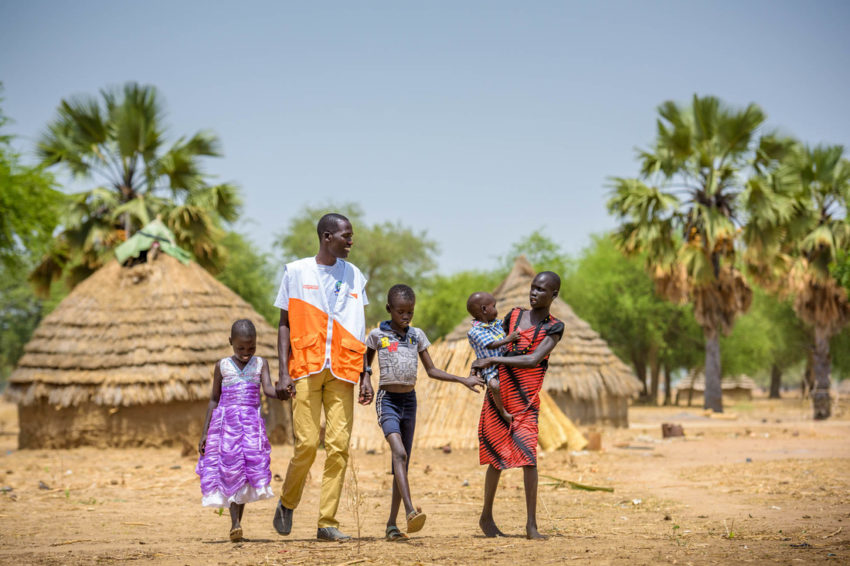World Vision disaster response expert Drew Clark answers our questions about violence in South Sudan, the challenges of working in a conflict zone, and hope for the war-torn country.
South Sudan became independent from Sudan in 2011. Why have things gotten so bad since then?
South Sudan has always been one of the poorest places in the modern world and, before 2011, its people suffered under decades of oppression and civil war. When 99% of the population voted for independence, there was a moment of optimism and unity — but the challenges are daunting. Most of these issues aren’t new: tribal and ethnic conflict, the low price of oil, and unstable neighboring countries. But it is still painful to watch the unity of the new country fracture as people and tribes scramble for power. It is a very poor place with lots of armed men — not a good place to be a child.
What do the next few months look like if the conflict continues the way it’s been going?
We hope it won’t! There is an active peace process underway and a shared goal to make a peace agreement between the government and the primary opposition in August. But if the conflict remains, expect that people will keep fleeing from their homes, repeatedly, as they seek refuge from armed groups. Towns in the north of the country will continue to change hands, and because of the violence, organizations like World Vision will struggle to reach the people who are closest to the conflict. And cholera and other diseases are likely to spread.
What is World Vision doing to help people affected by the violence?
About 1.5 million people have been displaced in the latest round of violence in South Sudan. These people fled with almost nothing, and World Vision is providing food rations to families and screening for malnourished children who need special nutritional support. We provide safe spaces for children, establish emergency water and sanitation services and provide simple household items for people who can’t afford them. Where it’s safe to return, World Vision is helping people resume their livelihoods and rebuild their lives.
How is it possible to help children and families when the population keeps moving because of violence?
Working in conflict zones is hard. We have to be mobile and flexible so that we can send teams to find the new places of refuge. We work with others to track where people are moving and identify which basic needs are most urgent. We speak to local people to understand where people are going and why. Then, if they move again, we have to be ready to move our programs.
What are the physical and psychosocial impacts on children?
As you’d imagine, many children are hungry and thirsty and are more likely to be affected by infectious diseases. Many of them are traumatized by observing violence and its aftermath and from having to run away from their homes and villages.
How are World Vision’s work in Sudan and the Darfur region affected by the work in South Sudan, if at all?
World Vision works in both South Sudan and Sudan (including Darfur), but the political, tribal, and religious contexts are quite different. That’s one reason that the South Sudanese yearned for their own country.
What needs to happen for South Sudan to become a peaceful place?
Such a hard question. People need to believe that their government represents them and is doing its best to work in their interests. For that, building a national identity stronger than tribal identity will be crucial. In other words, people need to find common ground to bring them together, whether in faith, community, or anything that unifies rather than divides such a diverse country. People also need to believe that a better life is within reach — that with hard work and opportunity, a healthier and more prosperous life is ahead. That will lessen the appeal of war. And after all the violence, South Sudanese people need to find and extend both forgiveness and restorative justice. The church in South Sudan can play a key role in this.
What hope do you see for this country?
Only four years ago, people all across the country were delighting in their newfound independence. South Sudan is a young country filled with young people — the average age is 17, compared to 38 in the United States. It’s a cliché that the children are the future, but it’s true. They’re the ones who will build South Sudan.
How can we pray for South Sudan?
Pray for the peace process, for fairness and wisdom and compromise among key leaders. Pray for people who are hungry and desperate, especially children. And pray for people like our local World Vision staff, doing their best to be the hands and feet of Jesus in one of the world’s poorest places.

Drew Clark is the senior director for the emergency funding team at World Vision. Drew and his team help fund and implement emergency response projects around the world, assisting survivors of all kinds of disasters, both natural and human-made. Since joining World Vision in 2004, Drew has deployed to earthquake, flood, and conflict zones from South Sudan to Iraq to North Korea, and to refugee camps from Azerbaijan to Rwanda. Drew’s passion is to empower donors to serve people at their hour of greatest need in every corner of the world.


